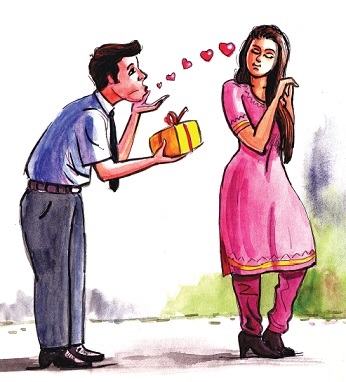
Public display of affection (PDA) is condemned by the orthodoxy and is given a thumbs-up by the liberal. How does one really convey love? Is there a scale on which your love can be measured? Does the number of kisses and gifts we share give an idea of the depth of love we have?
In the world where reel life dominates real life, the public scene is an illusion askesnd the private scene is the reality. The public display of love is often tailed by private demonstration of hate.
Often there are unseen conditions loaded on our display of love. The Mahabharata unfolds itself with Ganga and Satyavati falling in love with King Santanu, each with strong conditions. Every one-sided condition on a relationship tilts the balance, and the struggle becomes to see who can have more weighty conditions. The focus changes from love to one up-manship.
A hidden secret is revealed in the Ramayana about where real love lies, through Sita and Urmila. Rather than choosing the path of gifts and kisses, both decided to choose the path of sacrifice and unconditional love. Urmila by releasing Laksmana to serve Rama demonstrated unconditional love, and Sita by leaving her comforts to accompany Rama chose the path of sacrifice.
What the world sees will give at best mental satisfaction that leaves superficial impressions. What your heart sees will give you heart-felt satisfaction that gives very deep impressions.
When the word sacrifice is replaced by the word gratifice, the quest changes from ‘What can I do for you?’ to ‘What can you do for me?’
True love is tested by circumstances and established by the eagerness to sacrifice personal desires, comforts and opinions, to uphold that sacred bond of love.
Subha Vilasa Dasa is a motivational speaker and a spiritual lifestyle coach. He is also the author of the six-volume series Ramayana — The Game of Life (Book 1).
His email: ramayana.shubhavilas@gmail.com
